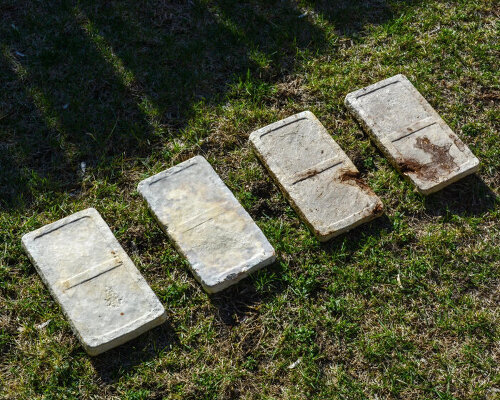Myco-type’s mycelium blocks and sheets from waste
Myco-Type produces mycelium blocks, sheets, and paste using sawdust, coffee grounds, and local agricultural and municipal waste. These biodegradable architectural and design materials come from recycled and local resources, mixed with mycelium to grow organic, multipurpose objects that can be used for different projects. The process starts with collecting waste materials, including sawdust from woodshops and coffee grounds from local cafés, which are used as feedstock. The next step is mold preparation, where the tools and containers are sterilized to prevent contamination by other microorganisms. It is here where the mycelium is added.
It can come from spores, grow kits, spawn, or liquid culture, and it is mixed into the feedstock inside the mold. A thin cover keeps it moist and clean, allowing the growing phase to start next. The mold is kept in a space with the right temperature, humidity, and air, so the mycelium can grow through the feedstock and around it, forming a solid shape. This stage takes a few days to a few weeks. After the mycelium has grown enough, it is removed from the mold, and then it is dehydrated using heat or sunlight. This ends the life of the fungi and makes the material stable. At this point, it can be cut, sanded, joined, or shaped, producing Myco-type’s mycelium blocks and sheets.
all images courtesy of Myco-Type
mushroom-based paste with wheat bran to create biomaterials
Myco-Type – a project by researchers Arvind Bhallamudi, Vaishnavi Mehta, and Calgary Haines-Trautman – explores how mycelium, or the root-like structure of fungi, can turn local waste into usable materials, such as blocks and sheets. The former is made from sawdust, water, and mycelium, which is light and can be cut, drilled, and glued. The latter uses coffee grounds instead of sawdust and makes thin, flat panels. These can be shaped using laser cutters and saws. There’s a third one in paste form. It is still being developed, but so far, the team says it can be shaped by hand, in molds, or by 3D bioprinting, and it also uses sawdust, wheat bran, and mycelium culture.
The team adds that these materials capture more carbon than they release. Each block stores about 200 grams of CO₂, making the materials carbon-negative. They break down in the soil in six to eight weeks and in water in about 12 weeks, and can be composted in the end. The team uses equipment from mushroom farming – such as mono-tubs, grow tents, and inoculation chambers – in the production. The materials are not alive when used, but only during the growth phase. Heat at the end of the process kills the fungi, but it is also possible to make live mycelium products (these need attentive care so they can stay alive). At the moment, these materials are experimental, and the team says that some tools like wire-cutting and CNC machines are hard to use on them. But the process allows tuning, and by changing inputs and growth conditions, they can achieve different properties and results.
a burst of mycelium growth at the surface after removing a block of substrate from its mold
surface enhancements including walnut paste, wheat paste and beeswax
detailed view of the biomaterial
Myco-Type’s mycelium blocks show the gradual decomposition process over four weeks
view of the compressed, dense mycelium sheets
the biomaterials are ideal for architectural and design projects
a night lamp with a mycelium shade integrated with a 3D printed base and motion detection system
stool and modular furniture grown on cardboard molds for the waste and fungi
view of the mushroom-based sheets for facades use, to name one
project info:
name: Myco-Type
researchers: Arvind Bhallamudi, Vaishnavi Mehta, and Calgary Haines-Trautman
faculty: Haley MacKeil
designboom has received this project from our DIY submissions feature, where we welcome our readers to submit their own work for publication. see more project submissions from our readers here.
edited by: matthew burgos | designboom
The post myco-type creates mycelium blocks and sheets with sawdust, coffee grounds and local waste appeared first on designboom | architecture & design magazine.

